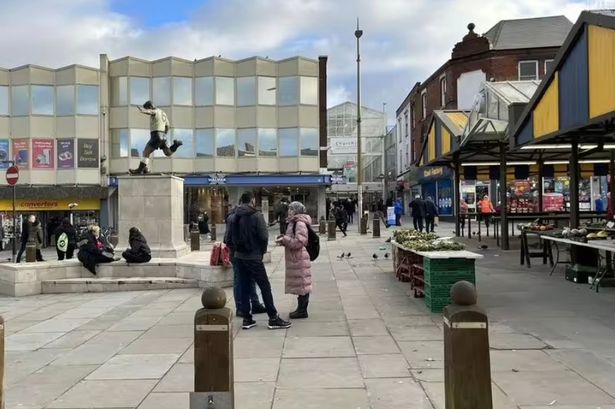The recent poll declaring this town the “unhappiest place to live” in Britain has resonated deeply with its residents, many of whom readily agree with the dismal label. Walking down its high streets, a sense of stagnation hangs heavy in the air. Rows of betting shops stand as stark symbols of economic hardship and limited opportunity, their bright, flashing lights a jarring contrast to the muted tones of the surrounding buildings. Residents express a sense of resignation, pointing to a lack of investment, dwindling job prospects, and a decline in community spirit as contributing factors to their pervasive unhappiness. While acknowledging the town’s problems, some residents also express a defiant pride, highlighting the resilience and close-knit nature of the community that persists despite the challenging circumstances. However, this resilience is often overshadowed by the visible signs of economic decline and social deprivation, leaving many to feel trapped in a cycle of despair.
Beyond the betting shops and the pervasive air of economic hardship, the town grapples with deeper social issues. A lack of recreational facilities and green spaces contributes to a sense of confinement and limits opportunities for social interaction and physical activity. Residents lament the closure of community centers and the dwindling support for local initiatives, further eroding the social fabric of the town. Many young people, seeking better opportunities and a more vibrant environment, leave the town in search of education and employment elsewhere, contributing to a brain drain that exacerbates the cycle of decline. Those who remain often feel a sense of abandonment and frustration, their voices seemingly unheard amidst the wider narrative of national progress and prosperity.
Interestingly, while agreeing with the “unhappiest” label, many residents point to neighboring towns and cities that they believe are even worse off. They cite higher crime rates, greater social deprivation, and a more pronounced sense of urban decay as evidence of their comparative advantage, however slim. This comparative perspective reveals a complex interplay of local pride and regional disparities, highlighting the uneven distribution of resources and opportunities across the country. Residents often feel forgotten by central government and neglected by regional authorities, their struggles overshadowed by the perceived priorities of larger, more economically vibrant areas.
This sense of being overlooked fuels a deep-seated resentment towards neighboring cities, perceived as unfairly benefiting from investment and development at their expense. Residents express frustration at the disparity in resources allocated to different areas, arguing that their town has been unfairly neglected and left to decline. This inter-town rivalry reveals a deeper tension surrounding regional inequality and the perceived imbalance in government priorities. While acknowledging their own town’s struggles, residents feel that their plight is compounded by the relative prosperity of nearby areas, further fueling their sense of injustice and marginalization.
The visual landscape of the town reinforces the sense of stagnation and decline. Beyond the ubiquitous betting shops, boarded-up storefronts and dilapidated buildings serve as constant reminders of lost businesses and dwindling economic activity. The lack of investment in public spaces is evident in the neglected parks and crumbling infrastructure, further contributing to the overall sense of neglect. This physical environment not only reflects the town’s economic struggles but also impacts the mental and emotional well-being of its residents, reinforcing the cycle of despair and contributing to the overall sense of unhappiness.
While the “unhappiest” label may sting, it also serves as a rallying cry for change. Some residents see the negative publicity as an opportunity to draw attention to their town’s plight and advocate for greater investment and support. Community groups and local initiatives are working tirelessly to address the root causes of unhappiness, focusing on creating opportunities for employment, improving access to education and recreational facilities, and fostering a stronger sense of community spirit. They believe that by working together, they can overcome the challenges facing their town and build a brighter future for its residents, proving that even the “unhappiest” place can find hope and resilience amidst adversity.














